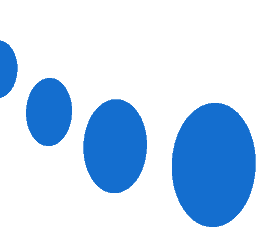Introduction
Recruiting a candidate requires a certain amount of expertise and experience. It’s unfortunate that many companies think that a simple job advert is enough to fill a position. This is an illusion of the past, and it’s crucial for companies to recognize this. This awareness implies the establishment of a clearly defined recruitment process, from the search for candidates to the signing of the contract. Every stage of the recruitment process needs to be carefully fine-tuned to avoid any “holes in the pipeline” that could lead the candidate to choose another company over yours. Several factors come into play, but one of the most divisive is communication, or more precisely, messages. The aim of this article is to provide you with examples of messages / emails according to the stage your candidate is at, from start to finish.



Contact emails: prospecting for candidates
Prospecting for candidates requires special growth techniques. From automated sourcing to copywriting, every step is important to maximize the results of your campaigns. Normally, if you conduct a good “hunt”, you should have 3 to 4 candidates in the “negotiation” phase within three weeks.
To help you in your prospecting efforts, it’s important to contact the various candidates via several channels. There are three of them, and if you integrate them into an automated sequence, you can be sure that the statistics mentioned above will always be there.
The three channels in question are (in order):
- Emailing
- Phone via SMS / WhatsApp
- The phone call
Here are some best practices for a candidate prospecting sequence:
- Sequences of 3 Linkedin messages max + 2 emails max + 1 WhatsApp or SMS message max + 1 phone call back
- Attract the candidate by complimenting his or her background, but avoid being too general. It has to be customized to the sector in which it operates, its school, and so on.
- Be concise: no more than 1000 characters per message. Ideally, aim for 500 characters.
- Don’t refer to an impersonal job description. Explain the broad outlines of the mission in the message.
- Like a salesperson, find your company’s strong points. Challenging missions, possibility of development due to rapid growth, training plan, teleworking policy, etc.
- Mention the salary! This alone will put you among the top companies… Even if you prefer to see the front profile, specify a range.

Here is an example of an email we use for one of our customers:
Email 1 :
Subject: Professional opportunity
Hello {{first name}},
I hope you’re well. Aurélien gave me your contact because he tried to reach you via Linkedin but without success.
You have an interesting profile and your expertise in cyber/CRM would be a great help to us!
We are looking to recruit a “GRC Consultant” on a permanent contract, not on an assignment basis but on a profile basis. At XXX, it’s our employees who choose their assignments, and we work more by feel than by CV!
We’re a 36-strong independent consultancy helping our customers to manage the digital risks associated with cybersecurity, the digital workplace, projects (and their adoption) and, more specifically, Information Governance.
Can we discuss this in person so that you can tell me about your plans?
Kind regards,
If you would like to find out more about our method, please take a look at our case studies: https: //stepward.com/cases/
Out of every 100 people you contact, approximately 40 will give you an answer. Of these 40, a majority will tell you that they are not currently looking for work. This doesn’t mean we should forget about them, quite the contrary.
Ask them if you can keep in touch with them to keep them up to date with developments in your company, and if one day they decide to leave their current company, don’t let them hesitate to contact you first. This is where we start talking about active candidate pools or “Talent Nurturing”.
Emails for Talent Nurturing
What is Talent Nurturing?
Talent Nurturing is the art of nurturing relationships with candidates, establishing a constant exchange to maintain the link during the recruitment process.
This strategy can be used to interact with both passive candidates who may be interested in the company, and active candidates who have applied. Talent Nurturing is part of the Inbound Recruiting strategy, and is aimed at building talent loyalty.
This strategy is designed to hold the attention of applicants. These days, they are more volatile than ever. For certain professions, we often find that they are the ones who make the decisions and can withdraw from the recruitment process at any time. When a candidate is actively looking for a job, he or she applies to several companies, but just because he or she has applied doesn’t mean he or she will necessarily follow the process through to the end. So we need to give him a reason to go all the way.
Talent Nurturing enhances the candidate experience by making them feel valued, offering them a personalized and unique experience. The aim is to share content that best meets their expectations. Today’s recruitment processes can sometimes seem a little obscure. As a candidate, you often receive an initial message, then hear nothing more from the company for 1, 2 or 3 weeks.
To maintain commitment during the recruitment process, it is necessary to communicate even after an application has been acknowledged. At this stage, the candidate already has a clear idea of what the company has to offer.
Measures to maintain commitment
Once the candidate has applied, you need to keep them informed and be transparent about the recruitment process. This may seem obvious, but few companies actually do it. For example, you can explain to the candidate all the steps he or she will have to take, and even, if possible, the average time between each step.
Companies communicate extensively upstream on all aspects of employer branding to attract, raise awareness and encourage talent to join them. The problem is that this dynamic weakens, or even stops altogether, once the candidate has applied to the company. To create this ongoing commitment, you can send an email with all the information you need to prepare before the interview. The goal? Enable candidates to project themselves over the long term into the position they are aiming for.
Today, video is a widely used format. The success of platforms like Instagram and TikTok is proof of this. Candidates, like consumers, love short videos. To nurture your employer brand on an ongoing basis, send candidates useful video tips to help them prepare better, and note down questions to ask. He or she will then be reassured and much more serene on the day of the interview, as there is often a certain amount of apprehension before an interview.
Recommendations for getting started with Talent Nurturing
- Identify the candidates for whom you want to implement specific actions. In trades where labor is scarce, qualified professionals are highly volatile, so we need to pay particular attention to them. For example, jobs in IT, sales and construction. These candidates are rare, so you need to stand out from the competition.
- It’s important to take a step-by-step approach and design a candidate experience that’s consistent with the employer brand promise. Create a kind of alignment, before, during and after the recruitment process. Because just because a candidate is rejected doesn’t mean we can’t keep in touch with them. On the contrary, when a new employee is recruited, he or she must be well integrated into the company. Hence the alignment!
The main aim of transactional recruitment emails is to stay in the minds of candidates. This will keep your pool of candidates active. In fact, the vast majority of ATSs are nothing more and nothing less than gigantic, under-exploited CV libraries. At Stepward, we build custom ATSs for our customers via Airtable.
Best practices :
- Do not send more than one transactional e-mail per month.
- It’s essential to offer added value, and not just talk about your company. For example, if the candidate is a digital project manager, consider preparing an e-mail to facilitate his or her technology watch.
- Mails should be quick and easy to read, with a maximum of 1000 characters.
- Mails should be marked with your company name.
- It’s a good idea to include a call to action every three months to find out where the candidate’s career plans stand.
Email 1: Monitoring the recruitment process
Subject: [Nom de l’entreprise] – Progress of your application for the position of Web Developer
Hello [Nom du candidat],
We have taken into account your application for the position of Web Developer at [Nom de l’entreprise]. Thank you very much for your interest in our company.
It is important for us to provide you with information about our recruitment process so that you have a clear view of the various stages to come:
- Review of your application by our human resources team (1 week)
- Telephone interview to better understand your profile and aspirations (30 minutes)
- Online technical test (1 hour)
- Face-to-face interview with the technical team (1 hour)
- Meeting with the management team (30 minutes)
We undertake to provide you with feedback after each stage, within a maximum of one week. We encourage you to prepare well for your interview by learning about our company and current projects via our blog and social networks.
If you have any questions, please don’t hesitate to contact us.
Best regards,
[Votre nom] Human Resources Director at [Nom de l’entreprise]
Stepward’s take on the mail:
It’s important to keep candidates informed about the recruitment process and give them an idea of how long it will take. This shows that you respect candidates’ time and do your utmost to minimize uncertainty. The e-mail is clear, concise and well structured. It’s good practice to invite candidates to prepare for their interview by finding out more about your company.
Email 2: Maintain contact with the candidate
Subject: [Nom de l’entreprise] – Web development trends not to be missed!
Hello [Nom du candidat],
As a Web Developer, you’re probably aware of the rapid evolution of the industry and the importance of staying up to date. At [Nom de l’entreprise], we believe in sharing knowledge to help everyone develop professionally.
That’s why we’ve put together a summary of the latest trends in Web development:
- The rise of JS frameworks such as Vue.js and React.js
- The rise of JAMstack development
- The importance of UX/UI in Web development
- The move to Web 3.0
To find out more about each of these trends, read our latest blog post here : [lien vers l’article de blog]
We hope this information will help you in your technology watch, and we’d love to hear your views on these topics in a future interview.
And where do you stand in your career plans? [lien vers un formulaire]
Best regards,
[Votre nom] Human Resources Director at [Nom de l’entreprise]
Stepward’s take on the mail:
It offers added value by sharing current Web development trends, demonstrating that you care about the candidate’s professional development. It also creates an opportunity for conversation and discussion during an interview.
Once you’ve mastered these two major steps, you should see your diary fill up with appointments with candidates. But to maintain the relationship, you need to plan emails or messages during the implementation of your process. For a candidate, a week can seem much longer than for a company. Whether they’re actively looking for a job or not, candidates want to hear from us quickly. If you’re not able to do this, you can always keep in touch with follow-up/post-interview e-mails.
Follow-up / post-interview email templates
In the recruitment process, follow-up e-mails are essential to maintain open and transparent communication with candidates. They’re based on the principle of empathy: a candidate understands that recruitment can take time, but to avoid demotivation or the risk of losing them to another company, it’s crucial to maintain their interest for one or two weeks.
A recruitment process is a significant step for a company, but it has an even greater impact on the candidate. Waiting for an answer, especially after an interview that went well, can be stressful. This is where transparency comes in, demonstrating the professionalism and competence that all companies must have. What’s more, these qualities are often required of applicants too.
Here are some best practices for writing a post-interview follow-up e-mail:
- Use the candidate’s first name
- Pay a compliment
- Be precise
- Mention the place and date if another interview is planned, or if a visit to the offices or a meeting with potential future colleagues is on the agenda.
- Reiterate the missions or key points of the position
- Don’t keep the candidate waiting for more than three days
Example of good e-mails:
EMAIL 1:
Good evening Chloé,
I’d like to come back to you regarding our previous exchanges.
I would like to confirm my interest in your application.
As mentioned above, I can’t give you the job title “Web-marketing manager”, as long as the current person (who’s on sick leave) is still in post.
However, I can suggest that you start working together with the title “Digital Project Manager” and then modify this title as soon as possible.
If this suits you, I can offer you a salary of €42k gross per year.
The start of the job will depend on your availability / ability to come to Bordeaux. I’d like it to be possible before the end of August (knowing that I’ll be away from the 7th to the 21st).
As a reminder, here are the planned missions:
- Increase your company’s online visibility
- Generate qualified leads => With SEA & SEO team
- Improving the user experience on the website => With UX team
- Managing online reputation => With CM team
- Monitor and analyze performance
- Innovate and test new marketing strategies
- Web-marketing project management (with various company departments)
- Support / supervise the web-marketing team with the help of the division managers
It’s a whole program that I think we’re going to enjoy together!
So I’d be delighted to have you on the team.
I believe from memory that you’ll be in Bordeaux tomorrow, so if you have a slot, we can meet to discuss this face-to-face.
A very good evening to you.
Stepward’s take on the mail:
This e-mail is well structured. He begins with a direct and cordial approach, emphasizing the company’s interest in Chloé’s candidacy. The recruiter then clearly explains why he can’t offer Chloe the specific job, or rather job title, she applied for. The e-mail is transparent about the proposed salary, and gives an idea of the timetable for taking up the position. Finally, the job description is detailed, so Chloé knows exactly what is expected of her.
EMAIL 2 :
Hello Chloé,
Thank you for your message and you’re right to get back to me. 🙂
For the moment, the tenders on which we are positioned and which will condition our future portfolio have not yet been closed…. Unfortunately, I don’t have the visibility to date to allow you to project yourself. :/
How are you getting on?
I suggest you take stock at the beginning of the school year if that suits you, I’ll have to see things more clearly…
Kind regards,
Jennifer
Stepward’s take on the mail:
This e-mail is also a good example of empathetic and transparent communication. The sender responds to a reminder from Chloé and explains why he can’t give a definitive answer yet. The recruiter suggests a new date for a follow-up interview, which is good practice as it avoids leaving the candidate in limbo.
EMAIL 3:
Hello Chloé,
Thank you for your e-mail.
I’ve been able to take stock of the situation with Soukaina and, after some thought, we’re going to go ahead with profiles that already have solid experience in mobile application environments. Unfortunately, we won’t be able to move forward with your profile.
Nevertheless, I’ve really enjoyed our exchanges, and if you agree, I’ll be sure to get back to you if the situation changes.
I wish you every success in your search and hope you find the job that suits you best.
Beautiful afternoon,
Stepward’s take on the mail:
This e-mail is an example of how to tell a candidate that he or she has been unsuccessful. The tone is respectful and empathetic. The sender stresses that he has enjoyed talking to Chloé and will remember her if the situation changes.
EMAIL 4 :
Hello Chloé,
Nice to meet you!
Let me introduce myself: I’m Valentin, co-founder and director of customer services for agency XXX (XXX group).
Our HR department forwarded me your CV following your application for one of the XXX group’s vacancies. Your profile fits particularly well with one of our open offers, which you can find here.
on this link.
I’d like to discuss this with you in an initial meeting.
What are your next availabilities? Ideally, share several slots with me so that I can adapt!
Hope to see you soon,
Valentin
Stepward’s take on the mail:
This e-mail is also an example of good practice. The recruiter shows interest in Chloé’s profile, and suggests an interview. He also asks Chloé to let him know her availability, which shows respect for the candidate’s time.
To help you identify best practices, it’s also useful to look at what you should avoid doing wherever possible.
Example of mails not to do :
EMAIL 1 :
Hello Chloé,
Thank you for your application for the position of Digital Communication Manager M/F at XXX. I’d like to talk to you in an initial video interview.
You can reserve a slot in my diary directly via this link: https: //calendly.com/xxx/30min
Have a nice day and see you soon.
Stepward’s take on the mail:
This e-mail is very impersonal, which may give Chloe the impression that she’s just another number among the candidates. What’s more, the recruiter asks Chloé to reserve a slot in his diary without giving her any context or additional information. This can give the impression that the recruiter lacks respect for Chloé’s time.
EMAIL 2 :
Hello, ma’am,
I’ve been looking to contact you about a Senior Digital Project Manager position (M/F), in the Paris, Marseille or Full Remote area.
I invite you to take a look at this offer: https: //www.talentscommerciaux.fr/emplois/xxx-chef-de-projet-digital-full-remote/
Let me know if you are interested in this offer
I remain at your disposal and wish you a pleasant day,
Yours sincerely
Stepward’s take on the mail:
This email is not very clear about the position offered and there is no personal interaction. Referring to a job offer breaks the “Headhunter” aspect. It’s like talking to a prospect and at the end he gives you the e-mail address contact@entreprise.com… No way! What’s more, it lacks a friendly, professional introduction and conclusion, making the e-mail impersonal.
EMAIL 3 :
Hello,
Following our exchange, I hereby confirm that you will be meeting with us on Friday July 21st at 09:00.
You will meet XX, Communications and Digital Director – Branded Wines Business Unit.
We look forward to seeing you at XXX 33000 Bordeaux.
Google Map link: https: //goo.gl/maps/AsHRJapgvDndarev6
Reception will notify you of your arrival, and if necessary you can contact XX on 06 XX.
I invite you to contact us if you have any problems.
Yours sincerely
Stepward’s take on the mail:
This e-mail lacks context. It’s not clear whether this is a confirmation of a meeting already agreed or a proposal for a meeting. What’s more, the tone is rather formal and authoritative, which can be intimidating for some candidates. It lacks warmth and personalization. For example, a welcoming introduction or a word of thanks for the candidate’s time would have been appropriate.
Conclusion
The art of emailing for recruitment is an essential skill in the world of human resources. It can transform the way you attract, engage and retain talent.
In the first part of our guide, we explored how contact emails can be used to prospect for candidates. The methods presented, including the use of LinkedIn, emailing and the telephone, can lead to impressive results, with 3 to 4 candidates in the “negotiation” phase in less than three weeks.
In the second part, we introduced the concept of “Talent Nurturing”. This means maintaining constant engagement with candidates, offering them a personalized and unique experience. In addition, we discussed the steps needed to maintain this commitment and recommendations for getting started with Talent Nurturing.
We’ve also shared some sample emails to help guide your copywriting process. These emails will enable you to keep candidates informed of the recruitment process, offer them added value and keep in constant contact with them.
By mastering these techniques, your recruitment agenda should fill up quickly, and your company will be able to attract and retain the best talent. It requires an investment of time and energy, but the results are worth it. Remember, every candidate is unique and deserves individual attention to maximize their potential and commitment to your company. The success of your recruitment campaigns depends largely on the quality of your communication. Take the time to personalize your messages, be transparent and responsive, and don’t forget to offer added value. By doing so, you’ll increase your chances of success in recruiting top talent.
Once this content has been worked on, it’s time to look at automating candidate sourcing.






